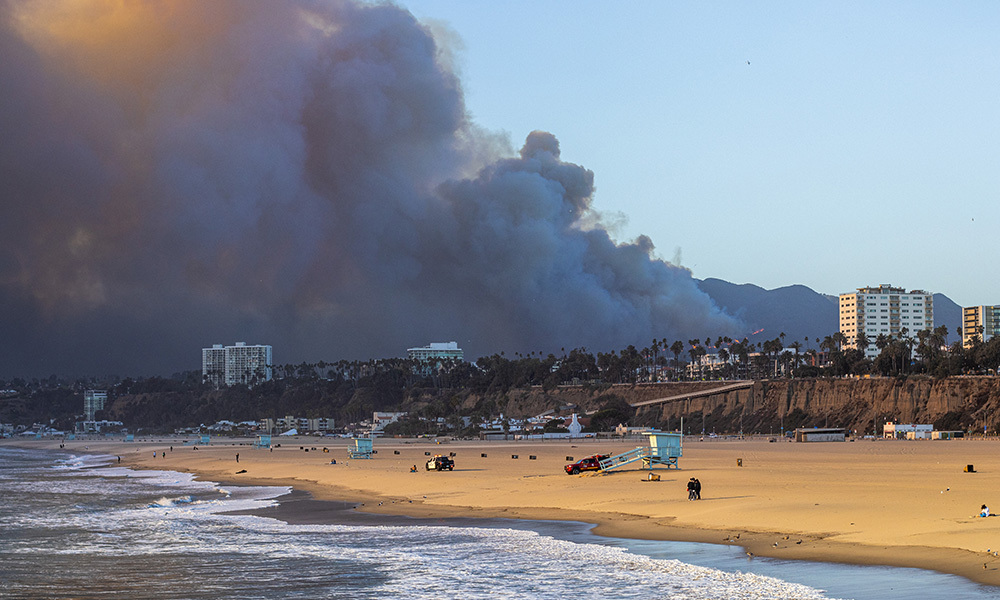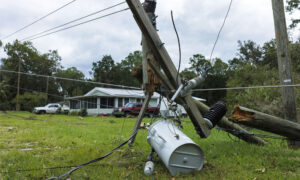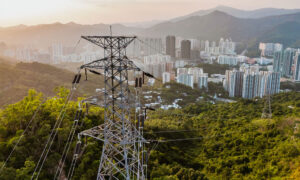After devastating wildfires destroyed parts of Los Angeles County, thousands of people are now beginning the long road to recovery. What can policymakers do to help? To find out, we turned to Jennifer Gray Thompson, an alum of the USC Price School of Public Policy and one of the nation’s leading experts on wildfire disaster recovery.
Thompson, who earned a Master of Public Administration (MPA) in 2013, is founder and CEO of After The Fire USA, a nonprofit that supports wildfire survivors and advocates for them on Capitol Hill. Her comments were edited lightly for length and clarity.
How can local policymakers meet the needs of L.A. wildfire survivors?
First, I want to say that every policymaker at every level – local, state, regional, and federal – has a role to play. I cannot express enough that this is a time for really brave leadership.
It’s really important to be non-partisan about this. Figure out how you can listen to people. A big tool for this community that will absolutely work is the block captains, or people who can organize meetings in neighborhoods of 10 to 100 people, and you appoint one or two people to sit in a room every single week for the next year.
The local government should fund that effort by providing meeting places, coffee, etc., and they can invite lawmakers to come and sit with them. It’s really a partnership between the rebuilders, the community and the elected leaders. That’s how you get good policy because good information can flow up and it can flow down, especially in this age of disinformation.

Master of Public Administration Online
Advance Vital Institutions
Advance your career and the institutions you serve with our exceptional MPA online.
Find Out MoreHow can the federal government help?
Former President Joe Biden said the federal government would cover 100% of the costs for the initial disaster response for 180 days. That includes funds for debris removal, temporary shelters, and first responder salaries, among other things.
Well, we can get a lot done in 180 days. They could conceivably clean it up in 180 days. This is the vision, and it would save all these jurisdictions a ton of money if that’s the case. But we don’t know if, after President Donald Trump gets into office, can he walk that back? It’s an unknown.

California could also receive Community Development Block Grant Disaster Recovery funds, which support long-term recovery efforts. But those funds have to be appropriated by Congress. Funding for the Maui fire recovery took 500 days, and it was just done right before that session of Congress ended. So, we’re glad that that happened, but in the case of this fire, we expect the block grants to be fully politicized, and we’re probably going to have to wait until the House and the Senate flips in two years during the midterms. If that happens, then California will get more relief.
All states receive block grant funding after disasters to rebuild. It’s unprecedented to refuse to help a state after disasters, but we fully expect the Trump administration to leverage the suffering of disaster survivors. On Wednesday, the president stated states should take care of their own disaster response and maybe get federal funds afterwards. Apparently, he is not deeply aware of the impact nationally of his proposal. This isn’t solely a California problem. Dismantling FEMA will put lesser resourced states even further behind and strip them of any chance of recovery unless politically optimal for one ruling party. This is a deeply un-American proposal.
As L.A. rebuilds, how can it build more resilience to wildfires?
Well, we know so much. The science is there. We know how to make a house wildfire resistant.
We can do a couple of things. The first thing is, it should be absolutely mandatory that the state, federal and private sector, like homeowner associations, are required to sit down every single year and do their land management plan together.
The next thing is, how they build back. Public officials obviously have to require certain things like ember vents. They exist. They’re $5 each at the hardware store. Not having an attic is also really helpful. If you build a deck, you should be absolutely treating it with a coating to make it fire resistant. You can have trees, but everybody needs to have about five feet of clearance around their house.
Should certain plants or house designs be banned?
There are certain things that should be, not only discouraged, but banned. Eucalyptus trees, for example. There are certain plants that are highly flammable, non-native. And so you have to just say, ‘Nope, you can’t have those.’ You can still make really beautiful home designs. Your house can look any way you want it to look like and be much more fire safe – if you can stop the embers from going house to house.
There’s a polymer you can put in your house paint that will make it virtually fireproof. All these things exist, but people don’t know about them. So, part of the policy has to be around making sure that everybody knows what’s available. The private sector can help with that, and the public sector can make it more affordable.
Are there any policy ideas that policymakers should avoid?
The policy, nationally, that we should avoid is making disasters political. In fact, any lawmaker from any place who does it, I think they should be censured.




